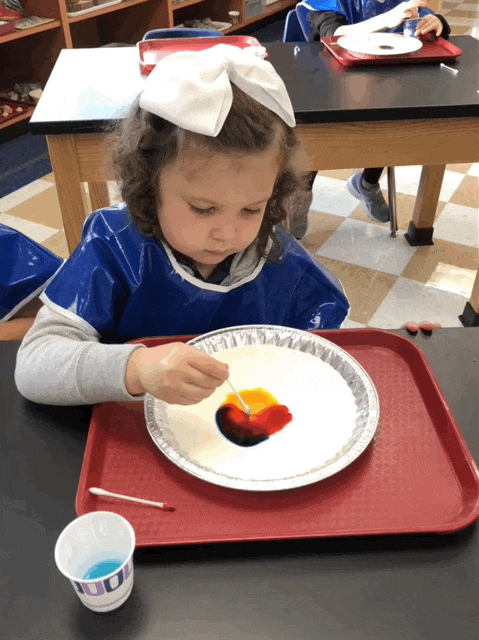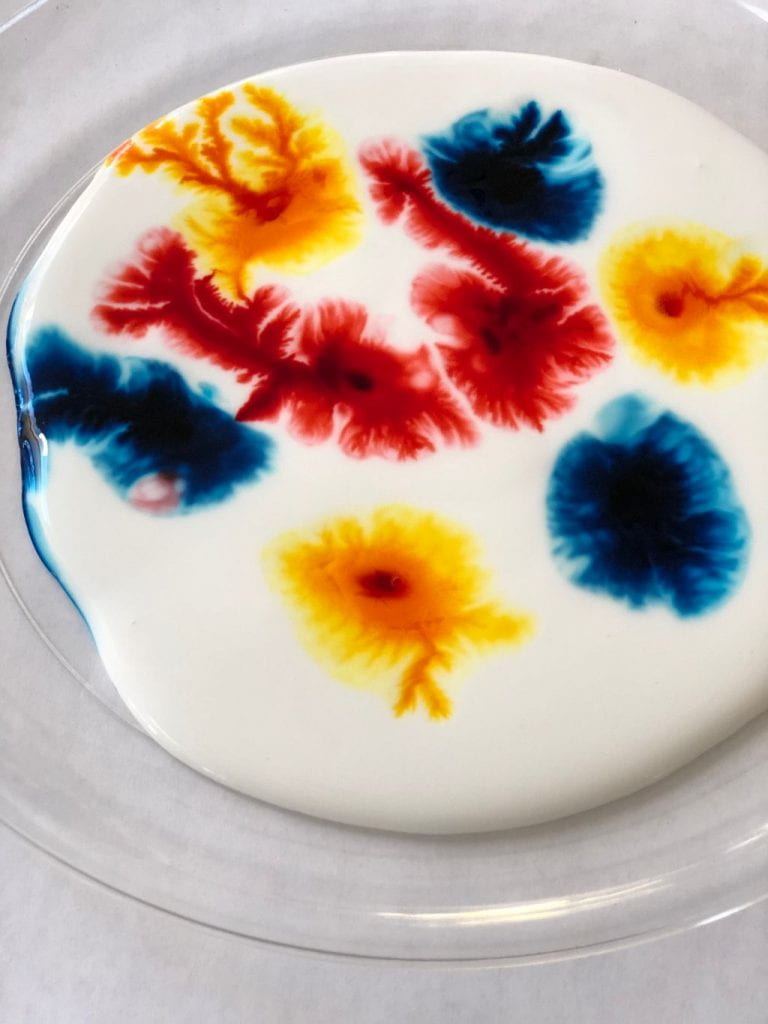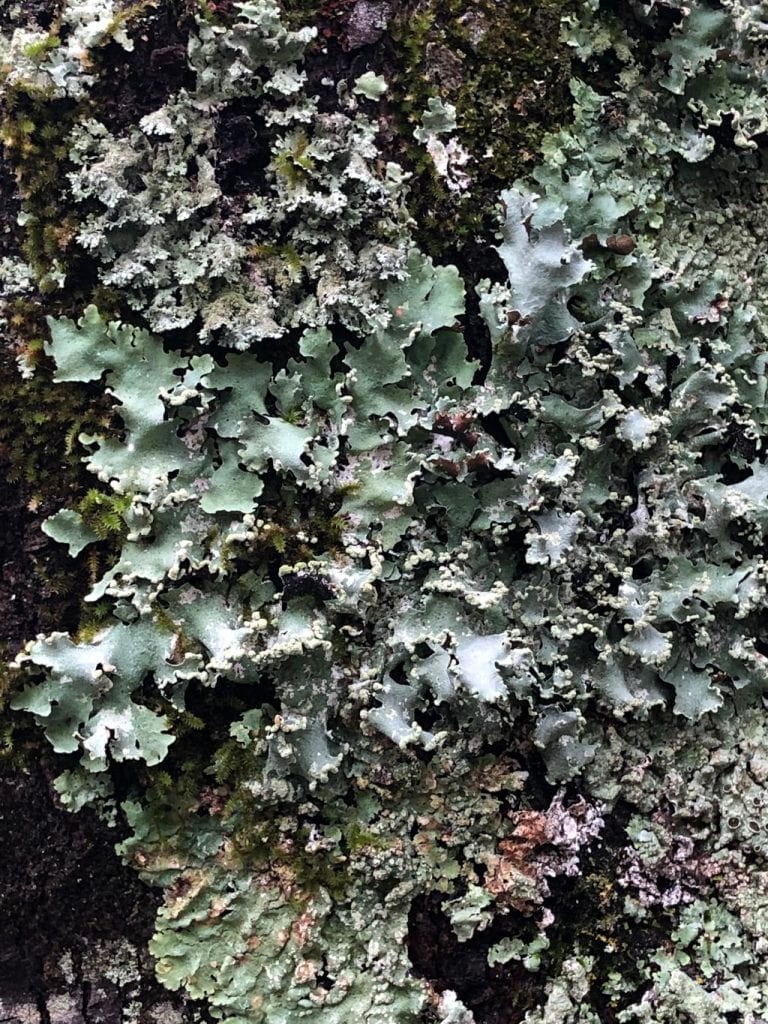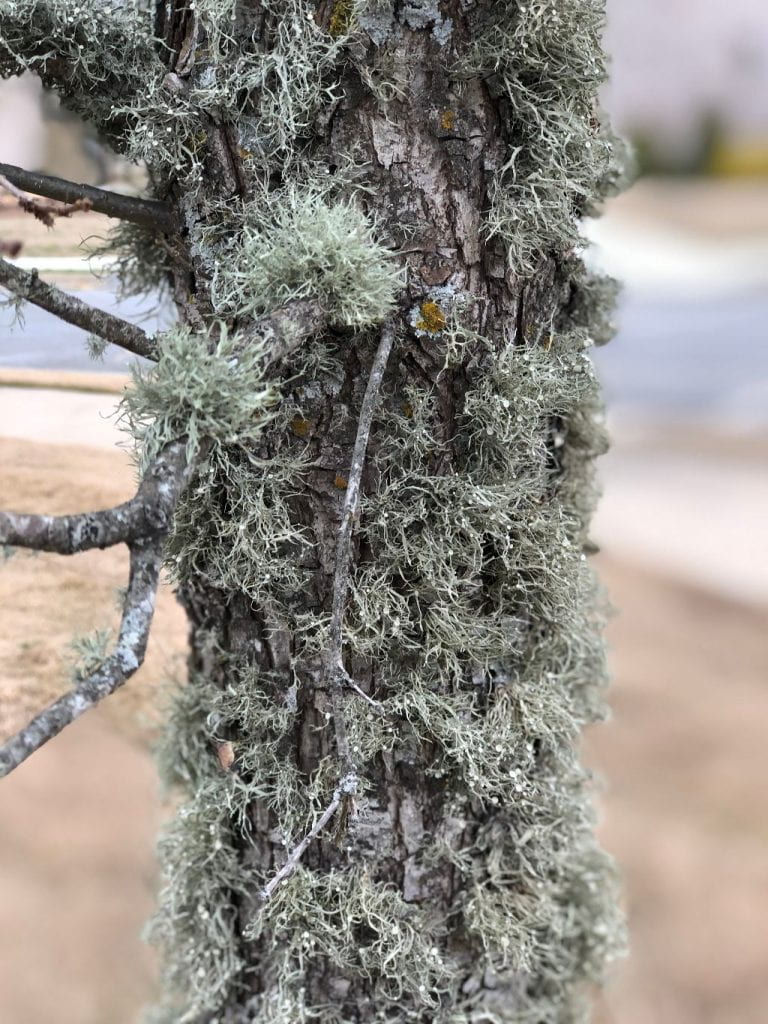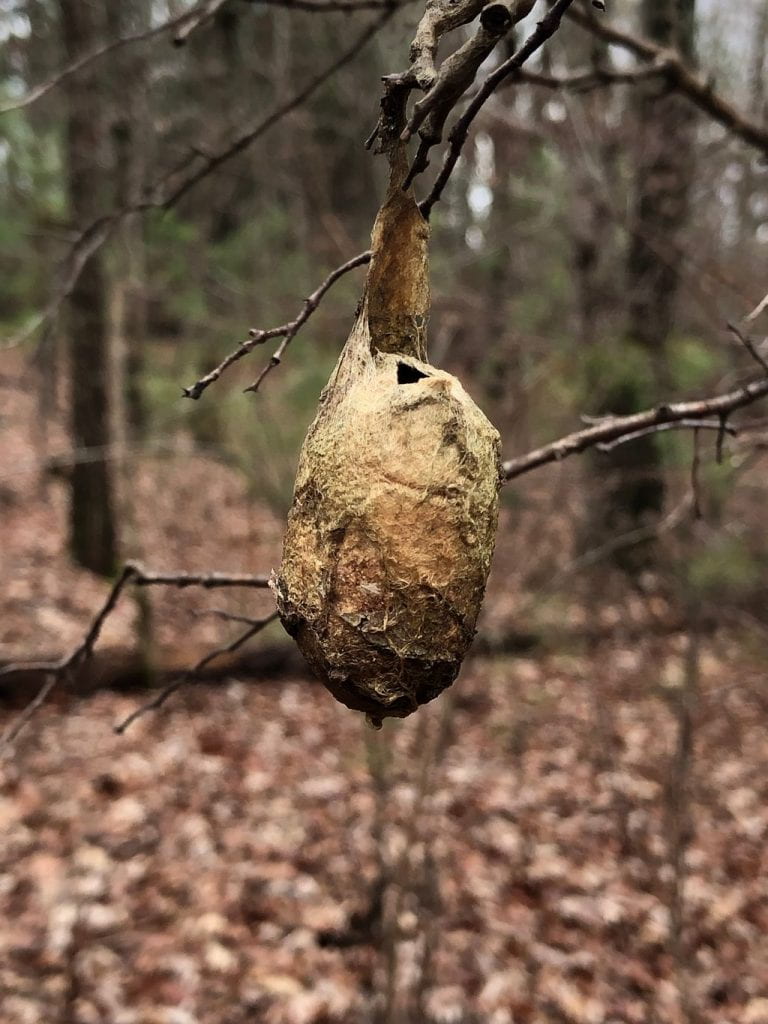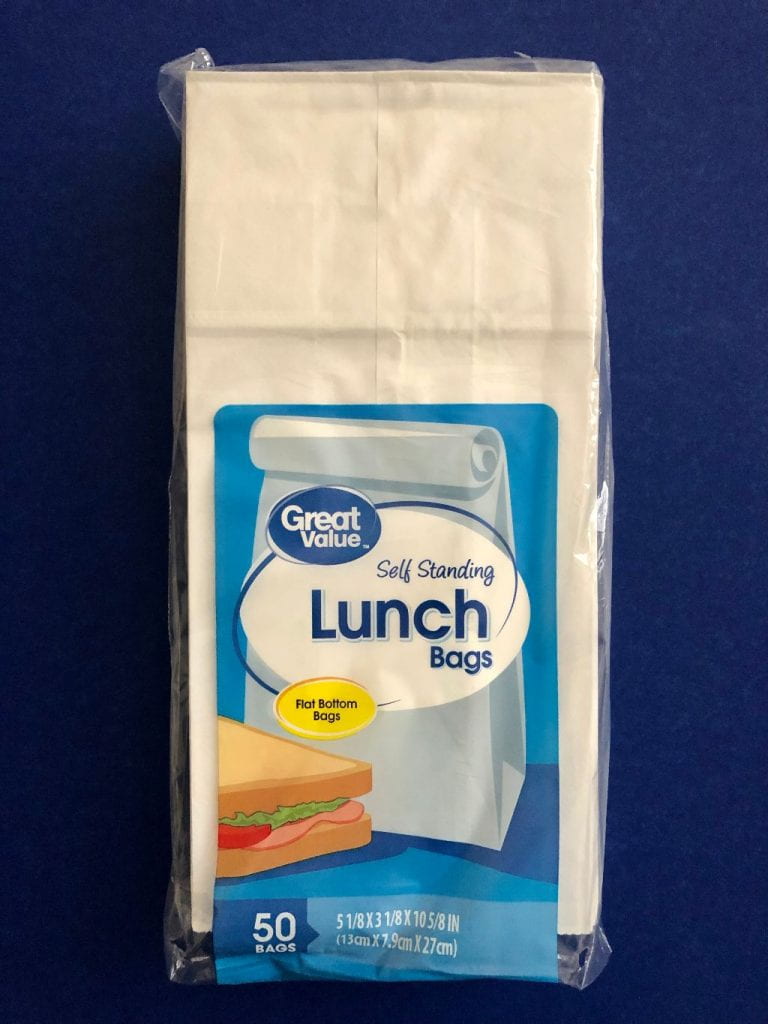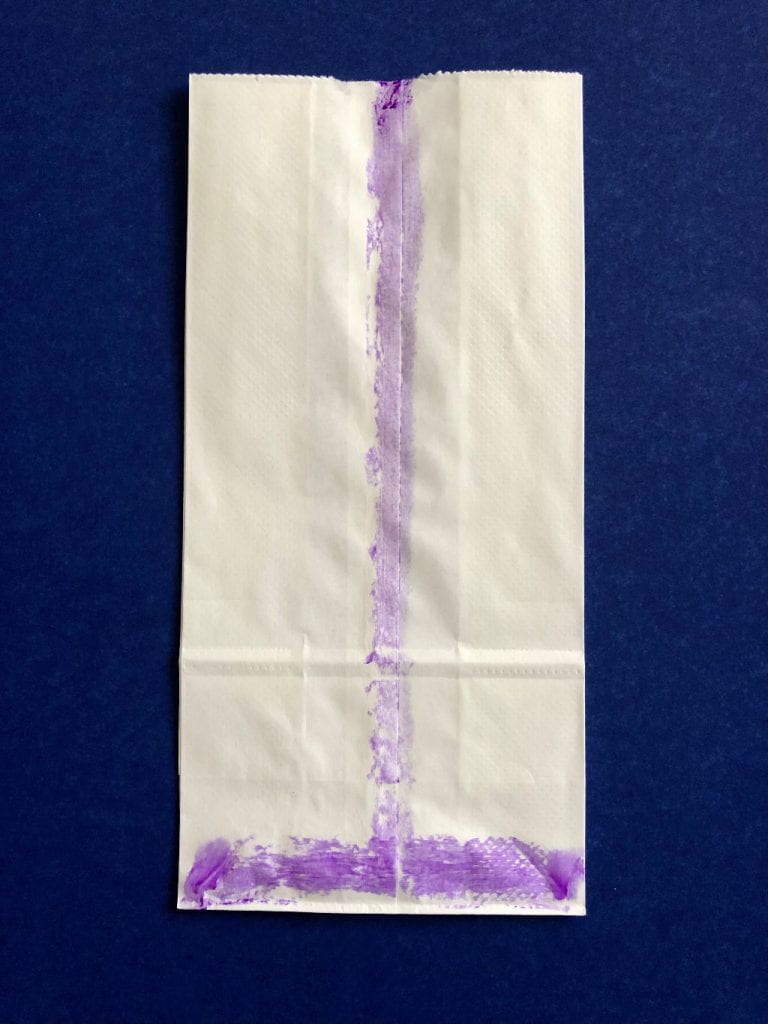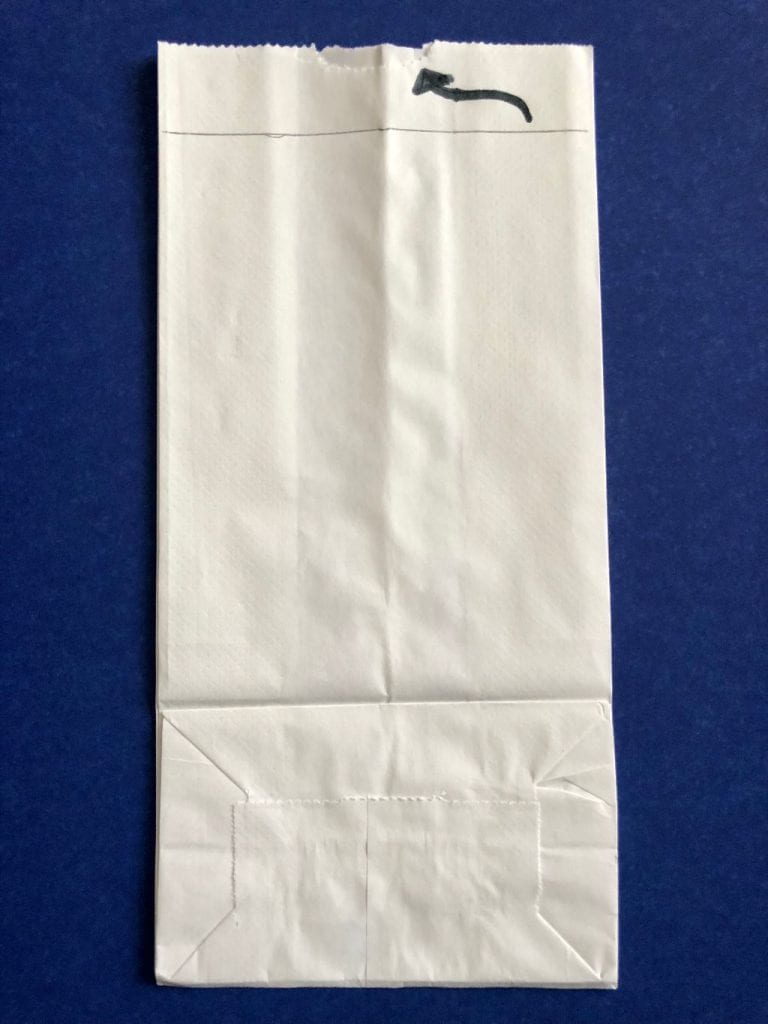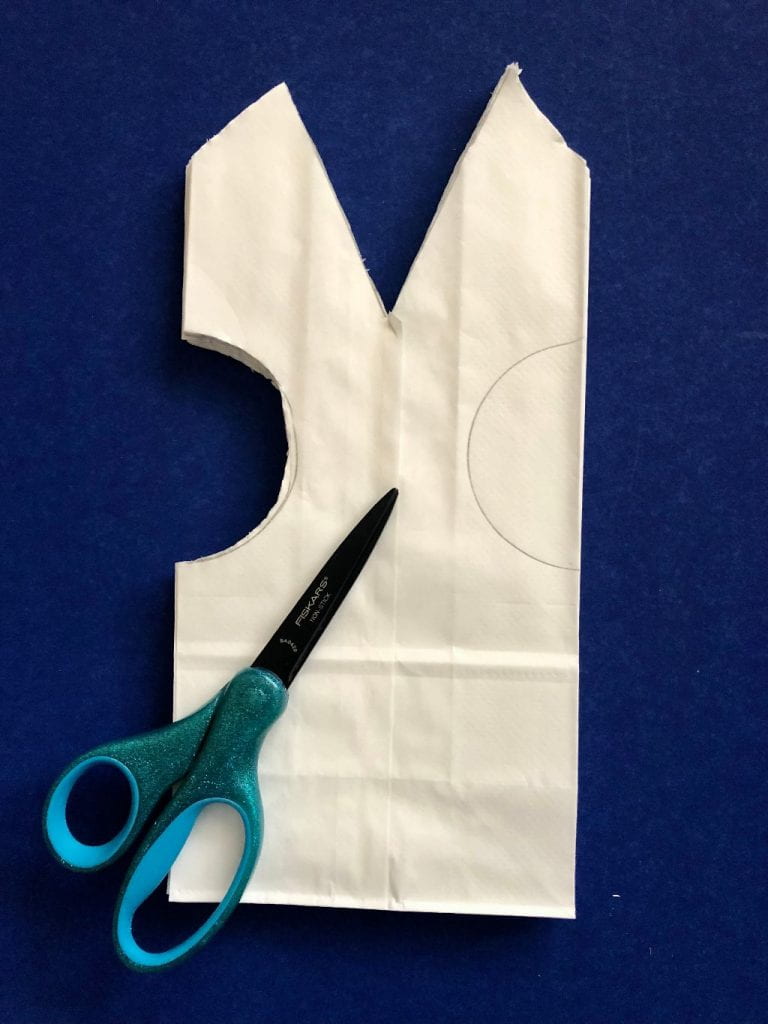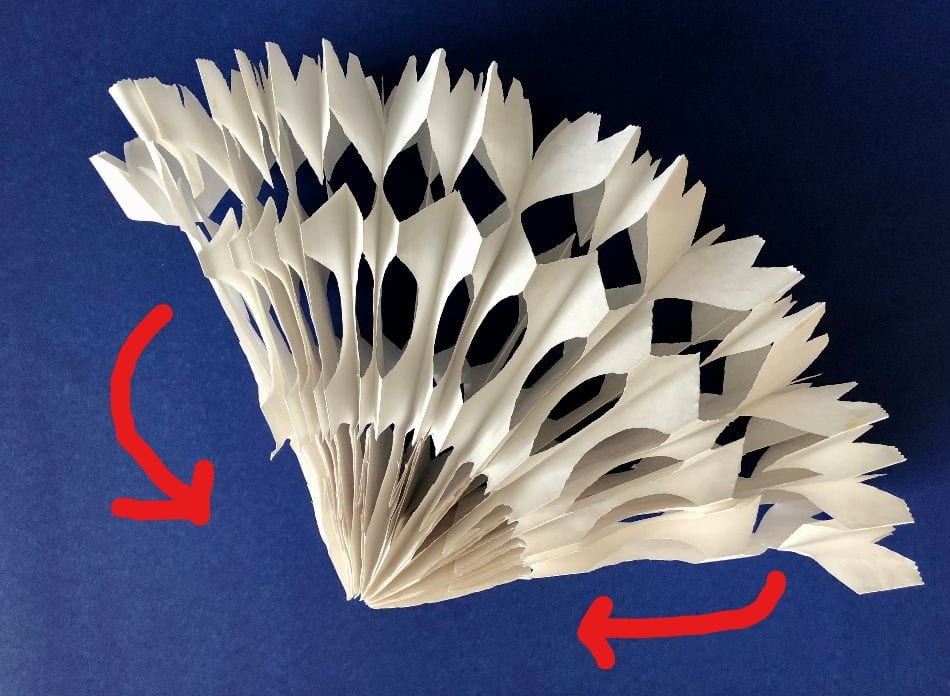Variation of Popular Science Experiment
Color exploding in milk was always a favorite experiment in my science classroom. As the soap molecules connect to the fat molecules, the molecules of the food coloring get pushed around everywhere resulting in an explosion of color. Click here for directions.
How would results change if you placed the food coloring in glue instead of milk? Click here for additional directions. Note the reaction time, if the colors mixed, and your end result. To continue experimenting, try a different brand of soap or glue. Add more or less water. (See video.) I used Palmolive soap and Elmer’s glue. Usually Dawn is my go-to soap for experiments. 
Click here for other variations of this experiment. Let the glue dry and peel it off the plate. What could you make? Take a sharpie and draw on the dried glue.
